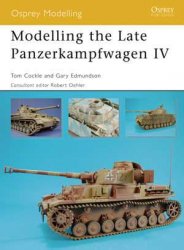This will complete what we have to say of the ruins in territory occupied by the Nahua tribes. Other remains of their handiwork we will examine when we treat of their customs and manners. We will now turn our attention to the ruins in the territory of the Mayas. As the culture of these two people is so similar, we will devote but one chapter to the two. Comparison is the great means we have of fixing in the mind points we wish to keep. We have to admit that the treatment of the Nahua ruins is not very satisfactory; but it is difficult to obtain accurate information in regard to them. We think what resemblance can be traced, is more in the direction of the Pueblo tribes than of the Mound Builders. The first ruin found in Mexico, Casa Grandes, in Chihuahua, is evidently but another station of Pueblo tribes.
The fortified hill at Quemada is apparently but a further development of the clustering houses with the little inclosures noticed on the Gila. Mounds are, indeed, mentioned in a number of localities, but they seem to be more nearly related to the terraced foundation of buildings observed in Arizona than to the mounds of the Mississippi Valley. Surely as striking a ruin as any is at Mitla, but Mr. Bandelier does not hesitate to compare it with some in the Pueblo country. Now, it is very unsafe and very unsatisfactory to trace resemblances of this kind, and we do not assign any especial value to them. But it only shows that, so far as this method is of use, it points to a closer connection with the Pueblo tribes than with the Mound Builders.
REFERENCES
The fortified hill at Quemada is apparently but a further development of the clustering houses with the little inclosures noticed on the Gila. Mounds are, indeed, mentioned in a number of localities, but they seem to be more nearly related to the terraced foundation of buildings observed in Arizona than to the mounds of the Mississippi Valley. Surely as striking a ruin as any is at Mitla, but Mr. Bandelier does not hesitate to compare it with some in the Pueblo country. Now, it is very unsafe and very unsatisfactory to trace resemblances of this kind, and we do not assign any especial value to them. But it only shows that, so far as this method is of use, it points to a closer connection with the Pueblo tribes than with the Mound Builders.
REFERENCES
- Gregory's "History of Mexico," p. 19.
- Bancroft's "Native Races," Vol. II, p. 92.
- The Tierra Caliente.
- Ober's "Mexican Resources," p. 2.
- "Mexico As It Was," p. 221.
- "Six Months in Mexico," p. 386.
- Mayer: "Mexico As It Was," p. 234.
- Thompson's "Mexico," p. 144.
- Bancroft: "Native Races," Vol. IV, p. 526.
- "Rambles in Mexico," p. 140.
- "Gratacap, in American Antiquarian, October, 1883, p.
310. - "Native Races," Vol. II, pp. 168-173.
- As to this hill, Mr. Bandelier remarks: "As a salient and
striking object, and on account of the freshwater springs,
Chapultepec was worshiped, but I find no trace among older
authors of any settlement there—still less of a Summer
palace— at the time of the conquest." "Report of an
Archæological Tour in Mexico," p. 73. - Charney in North American Review, September, 1880, p.
190. - "Recollections of Mexico," p. 140.
- We have several times remarked that it is not safe to judge
prehistoric population by the amount of ruins. "Indians never
rebuild on ruins or repair them." - Bancroft: "Native Races," Vol. IV., p. 537.
- Bancroft: "Native Races," Vol. IV, p. 547.
- The ceilings in the pueblos of Arizona were often made of
poles covered with cement. "images/Ch13_image/RoomPueblo.jpg">See Chapter XI. - Bancroft's "Native Races," Vol. IV, p. 550.
- Bandelier: "Fifth Annual Report Arch. Inst.," p. 86.
- Bancroft's "Native Faces," Vol. IV, p. 610.
- Bancroft's "Native Races," Vol. IV, p. 613.
- "Fifth Annual Report," p. 86.
- Bancroft's "Native Races," Vol. IV, p. 581. These dimensions
are different in different accounts, as may be seen by consulting
Mr. Bancroft's work. - Lyons's Journal. From Mayer's "Mexico As It Was," p.
243. - There is something of a similarity between these ruins and
those of the coast tribes of Peru. - Another authority states that it is thirty feet square and
thirty feet high. Bancroft: "Native Races," Vol. IV, p. 587,
note. - As seen in the Drawing. Mr. Lyons states there are seven
stories. - This was Clavigaro. Mayer's "Mexico As It Was," p. 245.
- Thompson's "Recollections of Mexico," p. 29.
- "An Archæological Tour in Mexico," p. 163.
- The altitude varies according to the side where the
measurement is taken. The average height is about one hundred and
seventy feet. - To be described hereafter.
- See Chapter XI.
- Different explorers give different figures.
- Taylor's "Anahuac," p. 184.
- "Mexico As It Was," p. 180.
- Mayer: "Mexico As It Was," p. 184.
- This is in strict keeping with what we have seen to be true
of their pueblo sites. This is the conclusion of Mr. Bandelier,
who discusses this subject in his essay on "Art of War Among the
Mexicans." Peabody Museum Reports, Vol. II, p. 146, note
186. - Bancroft: "Native Races," Vol. IV, p. 419.
- Bancroft's "Native Races," 393, note.
- Bancroft's "Native Races," Vol. IV, p. 395.
- Bandelier: "An Archæological Tour in Mexico," p.
295. - Mayer: "Mexico As It Was," pp. 251-2.
- Valentine, in "Proceedings Am. Antiq. Soc.," Oct., 1882.
- Bancroft's "Native Races," Vol. IV, p. 595.
- "Smithsonian Report," 1873, p. 373.




 World History
World History









